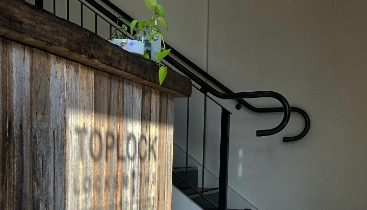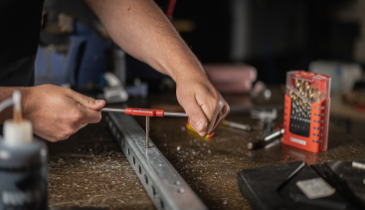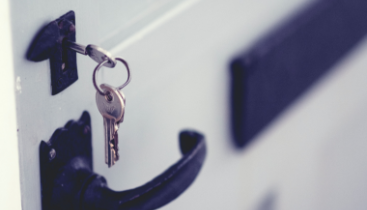Home Alarms – they scare burglars away
Sometimes people are just unlucky. They’ve got proper locks on their doors and windows, but they’ve just forgotten to turn that key and they’ve left a door unlocked. Or a particularly crafty burglar has come calling.
- What can you do? You can have backup, and your backup might just save the day.
- What backup should you have? You should have an alarm.
- What will an alarm system do for you? It will help make sure that a burglar either doesn’t bother to step inside or that if he or she does, that he or she leaves quickly.
I’ve heard it all before: “Alarms are a waste of money.” Oh no they’re not. I’ve also heard, “Yeah, I have one, but it’s not hooked up. Why bother?” Here’s why. Think about this: if a burglar does happen to get into your home or business, do you want him or her to be inside for a few minutes or a few hours? I’d prefer not at all, but I’d prefer seconds or minutes to hours.
Astonishing though it may seem, there have been instances where burglars have sat down, turned on the telly, helped themselves to some food and made themselves at home.
How can you prevent this? By installing an alarm system, making sure it is armed, loud, and hooked up to emergency services. The noise alone may drive the thieves away.
There are many different styles of alarms on the market. Some are hardwired; others are wireless. Some use alarm reed switches that activate when you open a door or window.
Here’s what a reed switch looks like.

Panic switches can also be installed – the most popular place for these being the bedroom of a house.
Don’t be afraid to show people you have an alarm. Place stickers on windows and doors – as well as on front and back gates – of your home and business. Remember, the goal is to make your home unattractive for a burglar. Friends or family members won’t think any less of you for it.
Finally, alarms provide the ultimate in peace of mind. You can receive phone, text and/or email messages to verify your property is secure when you are away, and to alert you to any possible threats.
All alarms come as part of a monitoring package. This means that if the alarm system is breached, emergency personnel will automatically respond. First, a call will be made to your home or business. Even if you answer, you will be required to give a code to confirm all is well. If you do not give the right code, emergency workers will come to the scene.
Procedures for what to do if you are under attack are thoroughly reviewed when your alarm system is installed. If you are not at home or in the office, or do not answer the phone, emergency workers are sent to the property immediately. Your home or business will be checked for intruders. You will receive a report. The cost for this monitoring begins at about a dollar a day, and is highly recommended.
It is often also monitored by a security centre. On the left is what a typical alarm looks like. When you enter your home, you enter a code to tell the “system” that it’s you entering. At the right is an example of a sticker you might place where it can be easily seen identifying your home as one that is protected by proper security.

Up until now, we’ve been talking about alarms that go off when a door or window has been opened. In addition, there are alarms that can detect movement. This is done by adding motion sensors in various places throughout the home. These days you can even get pet friendly alarms that won’t activate when a cat or dog is walking around.

These are generally not recommended for large-breed dogs.
Most alarm systems include both door/ window alarms and motion sensors.
Talk to your accredited MLA locksmith about putting together an alarm system tailored to your specific needs.
Share This Story
More from Toplock Locksmiths
Qualities Of A Great 24-Hour Locksmith Melbourne Customers Look For
There’s no doubt that locksmiths play a special role in our society. As much as [...]
The Different Services Offered By A Locksmith – Brunswick
People call on locksmiths for different reasons. There are a variety of tasks performed by [...]
Where Would We Be Without A Locksmith, Northcote?
Locksmiths play an important role in society. They have a huge contribution in keeping the [...]
Looking for a Locksmith in Northcote?
Looking for the right locksmith in Northcote? TopLock Locksmiths offers a 24/7 service. Our phone [...]
Downsizing Your Keyrings
Keys are one of the most commonly misplaced items. This may because we have so [...]





